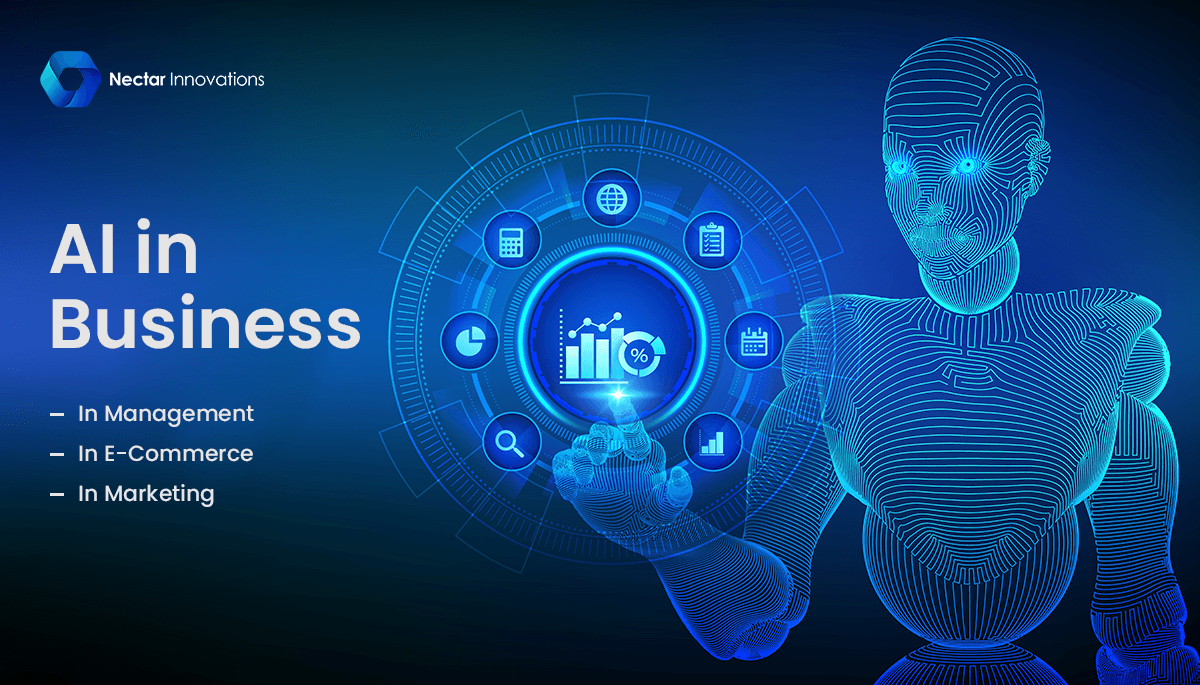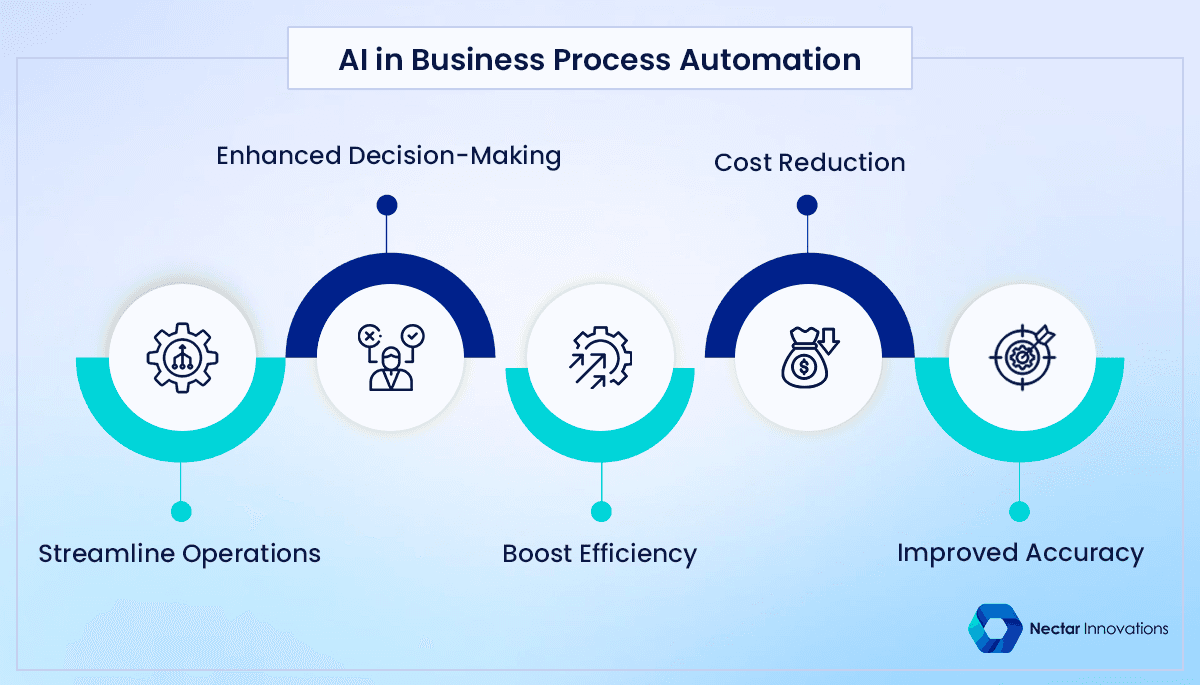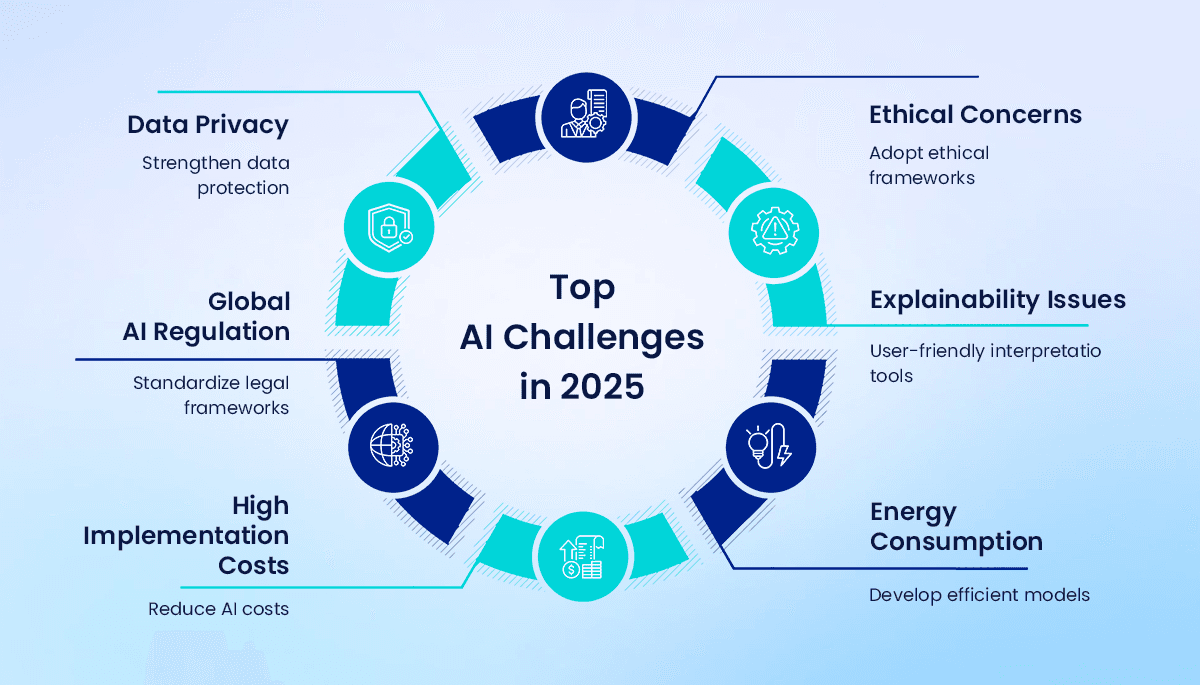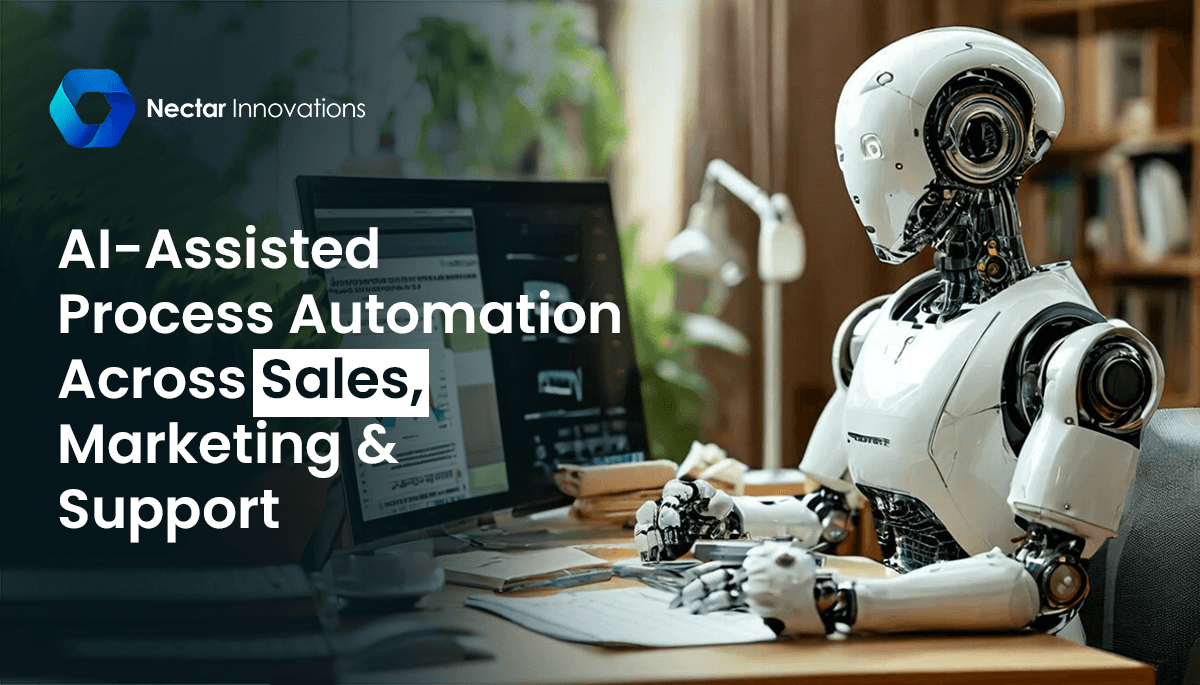The results speak for themselves. Companies see their win rates improve by 30% or more. AI-powered automation cuts down human error and helps assess data live. It also fine-tunes performance based on how users behave. Smart systems can analyze both structured data like purchase records and unstructured information from social media posts. This gives companies a better understanding of what consumers want and where trends are heading.
This piece shows how AI automation revolutionizes sales, marketing, and support through smart digital workflows. You'll learn about practical examples from different departments and the key tools behind these changes. While 50% of businesses already use AI for many functions, the path to fully optimized AI workflow automation offers both new possibilities and hurdles that need attention.
AI in Sales, Marketing, and Support: Current Landscape

Businesses are rapidly embracing AI technology in their operations. A recent survey showed that 78% of organizations now use AI in at least one business function, up from 55% last year. This rapid growth shows a fundamental transformation in how companies handle their digital workflows and optimize operations.
- Adoption Trends in AI for Business Functions
Organizations now implement AI across several departments, using it in an average of three business functions. IT, marketing, and sales teams lead this adoption, with service operations following closely. More than 71% of companies keep taking generative AI for at least one business function. Teams mainly use it to create text outputs (63%), generate images (over one-third), and write computer code (more than one-quarter).
- AI in Operations: From Manual to Intelligent Workflows
AI-powered systems have grown beyond basic automation into intelligent workflow orchestrators. These systems analyze big amounts of data and enable live decision-making to optimize processes. Operations managers can now find bottlenecks, predict equipment failures, and adapt to market trends with better accuracy. Experts point out that combining AI's capabilities with human expertise remains the best approach, creating a balanced partnership between technology and human judgment.
- Process Intelligence in Customer-Facing Teams
Process intelligence has become the foundation of AI implementation in customer-facing roles. Teams get accurate information about their existing workflows, task ownership, completion times, and automation opportunities. Four key technologies combine to create detailed process intelligence solutions:
- Process mining: Analyzes event logs to understand operational processes
- Task mining: Captures user interaction data to identify work patterns
- Process modeling: Creates detailed pictures of business processes and stakeholders
- Process mapping: Lays out activities required to complete processes
Customer-facing teams see measurable benefits from these technologies, including analytical decision-making, accurate performance reporting, and identification of automation candidates. Process intelligence helps companies eliminate inefficiencies while delivering affordable time and cost savings across sales, marketing, and support functions.
AI-Driven Use Cases Across Departments
Organizations today use targeted AI solutions to meet specific departmental needs. AI workflow automation creates measurable effects by streamlining processes and boosting decision-making capabilities.
- AI Automation for Sales: Lead Scoring and Forecasting
AI-powered lead scoring systems rank potential customers based on their conversion likelihood. These systems exploit data from
CRM, website interactions, email campaigns, and social media. Machine learning algorithms identify patterns and correlations in vast datasets that would overwhelm manual methods, which gives businesses deeper insights into customer behavior. Companies that use AI-driven lead scoring report a 1 to 2 percent boost in sales and a 1 to 3 percent improvement in margins.
AI analyzes historical sales data, customer interactions, and market signals to predict future revenue more accurately than traditional methods. Research shows businesses using immediate data analysis saw 80% increased revenue after implementation. Sales teams can prioritize high-potential opportunities by identifying patterns in customer behavior and market conditions, which improves their overall performance.
- AI in Marketing Automation: Personalization and Campaign Optimization
AI-driven personalization uses machine learning to customize marketing efforts for individual consumers through analysis of browsing histories, purchase records, and social media. This approach delivers individual-specific experiences, better ROI, and immediate decision-making capabilities. Research shows 71 percent of consumers expect companies to deliver personalized interactions, and 76 percent feel frustrated when they don't get them.
Marketing teams now use AI to generate content, segment audiences, and optimize campaigns. To cite an instance, AI algorithms customize offers and discounts by analyzing customer priorities. MovingWaldo's AI-powered tools determine audience segments based on moving dates or website language choices, which helps create over 100 highly targeted emails monthly.
- AI in Support: Chatbots and Sentiment Analysis
AI-powered sentiment analysis determines emotional tone in textual data through natural language processing, which helps businesses understand their customers' feelings. Companies can monitor retention risks, improve products based on feedback, and create individual-specific experiences.
Modern chatbots with sentiment analysis revolutionize customer service by understanding emotions beyond words. These systems detect frustration in customer language and adjust their responses, offering empathetic solutions or connecting to human agents when needed. Emotionally intelligent chatbots help companies achieve up to 20% higher customer satisfaction scores.
- Workflow Automation with AI Agents in Cross-Functional Teams
Multi-agent AI systems coordinate complex business processes across departments that once needed extensive manual oversight. These specialized
AI agents cooperate through central API orchestrators. Each agent contributes domain-specific knowledge to break down organizational tasks into manageable components.
Ground applications include employee onboarding orchestration, contract management workflows, and incident response coordination. The system's architecture grows through containerized deployment, maintains learning via persistent data storage, and improves continuously through automated integration. Businesses can now manage sophisticated workflows that previously required human coordination across multiple departments, which streamlines their operations.
- Meeting scheduling and follow-up automation
AI scheduling assistants manage meeting logistics automatically. These tools qualify leads, book meetings through conversation, and route leads to appropriate representatives without manual work. The system captures action items, creates summaries, and arranges follow-up meetings automatically.
- Real-time coaching and guidance
AI sales coaching gives personalized training and feedback to sales professionals. The systems offer role plays, pitch practices, and knowledge reviews while providing autonomous feedback. They analyze conversations immediately for sentiment, keyword trends, and objection handling to highlight areas for improvement. This feature helps sales managers who don't deal very well with providing personalized training to every representative.
AI Tools and Technologies Powering Automation

Businesses today depend on specialized AI tools and platforms to execute their automation strategies. These technologies are the foundations that help implement AI-driven processes in various departments.
- AI Workflow Automation Tools: Jasper, HubSpot, and Zapier
Advanced AI workflow tools combine smoothly with multiple platforms to enable automation. Zapier stands out as a leading orchestration platform that connects to over 5,000 apps. This allows companies to build custom AI workflows without any coding knowledge. Jasper's AI platform started as a tool for marketers but now works directly with Webflow and other systems to create content at scale. These tools create powerful automation chains with HubSpot. Teams can set up HubSpot triggers that automatically generate content in Jasper through Zapier's connections. The platforms help companies save about 282 days of manual work each year from nearly 300 work days.
- Process Bots for Repetitive Task Elimination
Robotic Process Automation (RPA) uses software bots to handle routine, rule-based tasks such as data entry and system integration. Two main types of bots exist: attended bots work with employees on command, while unattended bots run automatically in the background based on specific triggers. These digital workers move between applications and systems just like humans but complete tasks faster and more accurately. The bots handle invoice processing, data extraction from multiple sources, and spreadsheet manipulation without losing track of forms or making calculation errors.
- Automation Orchestration Platforms for Unified Execution
Service Orchestration and Automation Platforms (SOAPs) offer detailed management of complete technology stacks. Organizations can optimize service delivery by combining workflow orchestration, workload automation, and resource provisioning in hybrid IT environments. The platforms include error handling and recovery, broad integration options, and visual workflow design tools. These systems work with AI agents to perform tasks on their own in different business areas. Want to see how Nectar Innovations can help your team build smarter with AI? Schedule a call today.
Challenges and Considerations in AI Automation

AI workflow automation faces major challenges despite its rapid adoption. Data quality remains the biggest problem—81% of AI professionals say their companies don't deal very well with data quality issues. Companies' leadership fails to address these problems according to 85% of professionals, which creates a dangerous gap between what executives think and what actually happens.
- Data Quality and Integration Barriers
Unreliable AI outputs, financial waste, and increased business risks stem from poor quality data. Directors and managers who work directly with implementation understand these dangers—90% believe leadership ignores these problems. Data fragmentation makes adoption harder because inconsistent formats from different sources create uniformity challenges.
- Ethical Use of AI in Customer Interactions
Flawed data can cause AI systems to reproduce and magnify biases in their outputs. Ethical AI implementation goes beyond preventing bias—IBM research shows 85% of customers think ethics matter in AI technology. Companies need transparent data practices that include:
- Clear communication about customer data collection and use
- Strong privacy protections that follow GDPR and CCPA rules
- Regular bias testing of algorithms
- Balancing Human Oversight with AI Autonomy
The human-in-the-loop approach will give a way for AI to support rather than replace human decisions. Too much human oversight can make AI less effective by overwhelming users with notifications instead of allowing automated responses. Success depends on finding the right balance between automation efficiency and human judgment.
Conclusion
AI-powered workflow automation has changed how businesses operate in sales, marketing, and support functions. This piece shows how smart systems now analyze huge amounts of data and make decisions in real-time to optimize processes with amazing precision. The numbers tell the story - 78% of organizations now use AI in at least one business function. Another 71% regularly use generative AI for everything from writing text to coding.
Teams across departments see real benefits from AI. Sales teams get better at scoring leads and forecasting, which improves margins by 1-3%. Marketing teams use personalization tools that meet the needs of 71% of consumers who want tailored interactions. Support teams boost customer satisfaction up to 20% through smart chatbots that understand emotions.
These benefits come with challenges. Poor data quality affects 81% of AI projects, while teams must carefully think about bias and privacy concerns. Finding the right mix of efficient automation and human judgment remains the biggest hurdle for organizations.
The technology that powers these changes keeps getting better fast. Process bots handle repetitive work, while management platforms provide complete control across technology stacks. Tools like Jasper, HubSpot, and Zapier create powerful automation chains that save about 282 days of manual work each year. Want to see how Nectar Innovations can help your team build smarter with AI? Schedule a call today.
Companies need to fix data fragmentation, create clear practices, and keep proper human oversight as AI technology grows. Organizations that handle these challenges well will without doubt gain big competitive advantages. They'll see better efficiency, deeper customer insights, and more tailored experiences across customer-facing teams.
Key Takeaways
AI workflow automation is rapidly transforming business operations, with 78% of organizations now using AI in at least one function and early implementations showing 30% or better improvement in win rates.
- AI adoption accelerates across departments: Marketing leads at 77% adoption, followed by sales at 51%, with organizations using AI in an average of three business functions.
- Measurable performance gains emerge: AI-driven lead scoring delivers 1-3% margin improvements, while emotionally intelligent chatbots boost customer satisfaction by up to 20%.
- Data quality remains the biggest barrier: 81% of AI professionals report significant data quality issues, yet 85% believe leadership isn't adequately addressing these critical problems.
- Human-AI balance is crucial for success: The most effective approach combines AI capabilities with human expertise, avoiding both automation overload and excessive manual oversight.
- Integration tools drive efficiency: Platforms like Zapier, Jasper, and HubSpot create powerful automation chains that save an estimated 282 days of manual work annually.
The key to successful AI implementation lies in addressing data quality issues upfront, establishing ethical guidelines, and maintaining the right balance between automation efficiency and human judgment across sales, marketing, and support functions.




